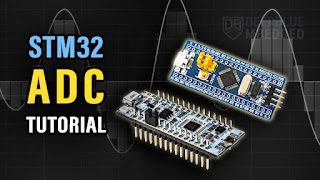How to Debounce a Button in Arduino (Software & Hardware Methods)?
Button debouncing is essential to avoid false triggers caused by mechanical switch noise. Below are 3 reliable debouncing techniques for Arduino, from simplest to most robust.
✅ Method 1: Simple Delay-Based Debouncing (Easy but Blocking)
Best for: Quick prototyping (not for real-time systems).
const int buttonPin = 2; int buttonState = HIGH; void setup() { pinMode(buttonPin, INPUT_PULLUP); Serial.begin(9600); } void loop() { int reading = digitalRead(buttonPin); if (reading != buttonState) { delay(50); // Debounce delay (adjust as needed) if (reading == digitalRead(buttonPin)) { buttonState = reading; if (buttonState == LOW) { Serial.println("Button pressed!"); } } } }
Pros:
✔ Simple to implement.
Cons:
❌ Blocks code execution during delay().
✅ Method 2: Non-Blocking Millis() Debouncing (Better for Real-Time)
Best for: Projects needing multitasking.
const int buttonPin = 2; int buttonState = HIGH; int lastButtonState = HIGH; unsigned long lastDebounceTime = 0; unsigned long debounceDelay = 50; // ms void setup() { pinMode(buttonPin, INPUT_PULLUP); Serial.begin(9600); } void loop() { int reading = digitalRead(buttonPin); if (reading != lastButtonState) { lastDebounceTime = millis(); // Reset timer on change } if ((millis() - lastDebounceTime) > debounceDelay) { if (reading != buttonState) { buttonState = reading; if (buttonState == LOW) { Serial.println("Button pressed!"); } } } lastButtonState = reading; }
Pros:
✔ Non-blocking (uses millis()).
✔ Works well with other tasks.
✅ Method 3: Hardware Debouncing (Most Reliable)
Best for: Noise-sensitive or high-reliability applications.
Option A: RC Filter (Low-Cost)
Add a 0.1µF capacitor between button and GND.
Use a 10kΩ pull-up resistor (or
INPUT_PULLUP).
Option B: Schmitt Trigger (Advanced Noise Immunity)
Use a 74HC14 (hex inverter with hysteresis).
Circuit Example:
[Button] --> [10kΩ Resistor] --> [Arduino Pin]
|
[0.1µF Cap] --> GND Pros:
✔ Eliminates software delays.
✔ Handles extreme noise better.
🔍 How Debouncing Works
Mechanical switches "bounce" (generate noise for ~1–50ms).
Software filtering ignores rapid changes.
Hardware filtering (RC circuit) smooths the signal.
🚫 Common Mistakes to Avoid
❌ Using delay() in real-time systems → Freezes the MCU.
❌ Too short debounce time → Still detects noise.
❌ No pull-up resistor → Floating pin causes erratic readings.
🎯 Which Method Should You Use?
| Scenario | Recommended Method |
|---|---|
| Quick prototyping | Method 1 (Delay) |
| Multitasking projects | Method 2 (Millis) |
| High-reliability systems | Method 3 (Hardware) |
💡 Pro Tip:
For multiple buttons, use a library like:
Bounce2 (Arduino)
DebounceInput (PlatformIO)




评论
发表评论